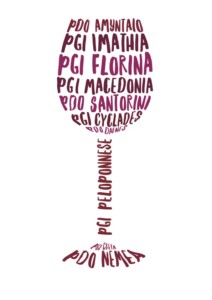
Greece is considered the birthplace of wine culture, and today wine is so woven into the country’s fabric of life that it often becomes hard to tell where one bottle ends and another begins.
Since ancient times, Greece has considered wine an integral part of daily life. Wine was poured during ancient Greek symposiums to lubricate lively conversations, though no debate called for full intoxication. Instead, those like Hippocrates studied wine for its medicinal purposes while others like Homer wrote about it extensively in “The Iliad” and “The Odyssey.” In fact, Greece became the first culture to have a dedicated god for wine –– Dionysus.
With thousands of years of experience, it’s no wonder that the country’s winemaking techniques are some of the oldest in the world, and can be traced back to the third millennia BCE.
From the early 1500s to 1800s, Greek wines were glorious. However, in 1830, these sprawling vineyards were suddenly largely abandoned. Agriculture in Greece became a means of survival, and the country was forced to prioritize the production of food over wine.
Yet this only paved the way for the resurgence of Greek wines and a celebration as large vineyards began to open back up. Today, with the help of modern winemaking techniques, better viticulture, and a new generation of quality winemakers, Greece’s wine industry is ripe for revitalization.
Incidentally, this same industry is drawing more and more attention because of the diverse range of its wines. Throughout the country, each of Greece’s wine regions varies greatly in climate and terrain, leading to the production of vastly different wine styles. Read on to learn about this dynamic landscape, and take the journey from cliff to Crete.
Northern Greece
While the mass of the country boasts sprawling mountain ranges, those that stretch across northern Greece serve a special function in the vineyard. Across the region, winters tend to be snowy and cold while summers are generally mild. Yet despite these frigid winters, the high-altitude vineyards are surrounded by towering peaks that protect the grapes from strong northern winds. The warm, sunny summer days give way to cold evenings and prolong the ripening season.
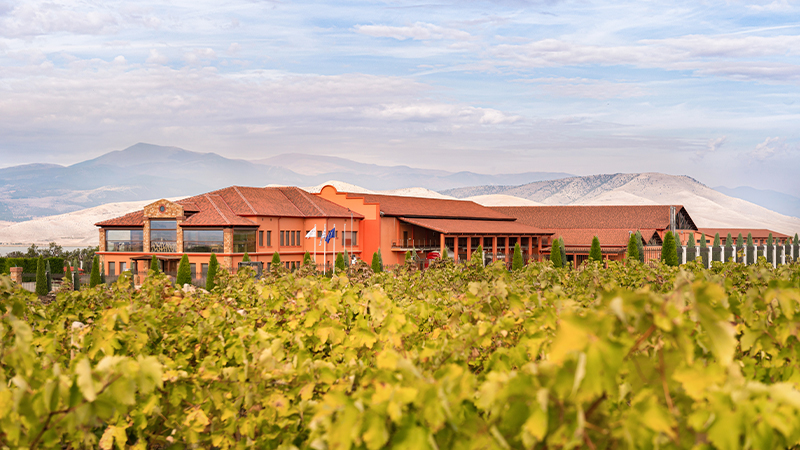
One grape that thrives in these conditions is Xinomavro. The trendy grape dates back to 200-300 BCE but continues to pop up on contemporary wine lists around the world. An indigenous grape, Xinomavro translates to “acid and black,” and remains one of the rarest noble grapes in the world. Wine connoisseurs often compare it to Italy’s heavy hitter, Barolo, or Barbaresco, and with high acidity and powerful tannins, Xinomavro wines can age for many years.
In northern Greece, the team at Alpha Estate blends Xinomavro with Syrah and Merlot to make the winery’s flagship red wine. The result? A bright purple-red wine with a complex bouquet of berries, leather, and spices and a mouth full of rounded tannins and bright acidity. Their Alpha Estate Ecosystem Xinomavro Reserve, which is 100 percent old-vine Xinomavro (the vines are over 100 years old) is a full-bodied red with rich fruit depth, velvety tannins, and notes of blackberries and plums.
Yet for as bold as the grape is, it is also surprisingly versatile. Nearby, the Kir-Yianni winery blends Xinomavro with Syrah for a spicy, robust wine, while in another bottle winemakers use the grape to make a light, crisp rosé.
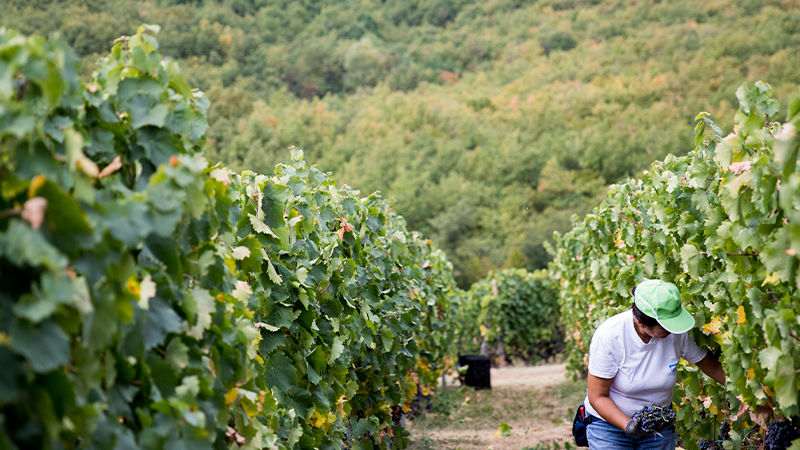
The Kir-Yianni vineyard of Amyndeon is the coldest winemaking zone in Greece. Nevertheless, the extreme shift in climate from winter to summer complements water from the four neighboring crater lakes (deep pools originally formed from meteors) to produce ideal viticulture conditions for Xinomavro.
Southern Greece
The largest red-wine region in Greece, Nemea sits in the northeast corner of the Peloponnese peninsula. There, red wine production dates back to the 7th century and the rugged plateaus, jagged mountains, and sweeping valleys give the area a multitude of microclimates to break up the hot Mediterranean climate. It is well known, however, that the best wines come from the highest regions.
Domaine Skouras sources its Moscofilero grape from the high-altitude plateau of Mantineia, Arcadia. Moscofilero is a spicy, aromatic pink-skinned grape that is planted in the Arcadian region within Peloponnese to make dry, crisp, mineral-driven wines that waft a delicate perfume. Domaine Skouras utilizes Moscofilero to produce several bottles of wine including its single-vineyard clone Skouras “Salto” and a 100 percent Moscofilero released in 2020. The medium-bodied 2020 wine presents intense aromas and flavors of white flowers, honeysuckle, violets, and rose petals. It is like drinking a bouquet of flowers with crisp acidity.
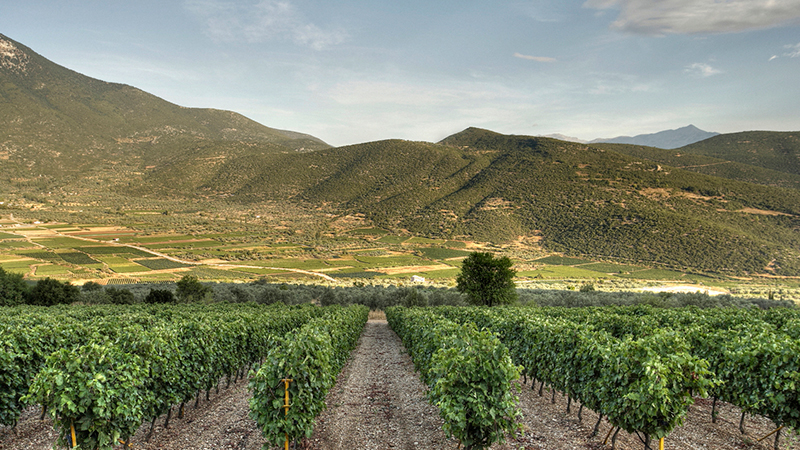
The Islands
One of Greece’s most iconic sights is the group of tiny islands splayed out through the Aegean Sea. There, whitewashed domed buildings sit on the edge cliffs surrounded by blue water and have lured more than one wanderlust traveler to the country.
Crete, Greece’s southernmost island, is also its warmest island along the coastline. The abundance of sunshine, rainfall, and mountainous terrain make it a perfect place to produce balanced, refined reds and crisp, rich white wines.
One grape of note, Vidiano, was resurrected from near extinction and recently made more popular by Douloufakis Winery. This ancient white grape is used to produce full-bodied dry white wines, and Douloufakis uses it to make its popular Aspros Lagos. The winery also produces a 100 percent Vidiano wine called “Dafnios,” which sees stainless-steel fermentation, as well as an amphora-aged Vidiano aptly named “Amphora Vidiano.”
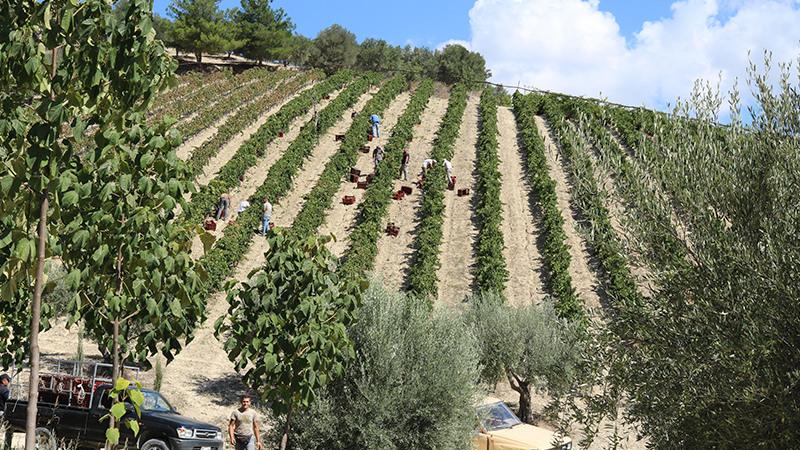
On the nose, the aromas in the Aspros Lagos hint at white flowers and citrus fruit, while the buttery, apricot taste imparts a mouthful of seductive minerals. The wine reads similar to a Loire Valley Chenin and has become a hit with wine lovers everywhere.
While Crete is the country’s biggest island, Santorini might be its most breathtaking. A large volcano eruption formed Santorini thousands of years ago, and now the windswept, volcanic island is known for its magical sunsets, steep cliffs, and acidic wine.
Viticulture in Santorini dates back to antiquity. Vines on the island are grown using the Kouloura method, and trained to grow in a tight circle to protect the grapes from the high winds and harsh sun. The black volcanic soil dusts an island that only sees about 15 inches of rain each year, creating a nearly desert climate. Yet when the fog rolls in at night, the island’s grapes grow rich with crisp acidity and great minerality.
Santorini’s most popular white wine grape is Assyrtiko, which remains the oldest DNA variety in the world. All the vines across the island have been propagated vine to vine for 3,500 years, and live on their original vine stock. Indigenous to the island, the grape can be similar to Sauvignon Blanc or Chablis with citrus flavors and tons of acidity. Its wines are known for their ageability and were noted in Jancis Robinson’s “Wine Grapes” in which she wrote that Santorini Assyrtiko “makes the most stunning white wine.”

Today, one of the most famous Assyrtiko producers in Santorini is Domaine Sigalas. The winery is best known for crisp, complex white wines and its vineyards are some of the oldest in the world, dating back more than 3,000 years. Its intensely aromatic wines have excellent structure, high acidity, and a full-flavored finish. Wine and Spirits describes the 2017 Sigalas Assyrtiko bottle as, “a liquid landscape of Santorini, from the clean, salty scent of a white-sand beach to the blinding brightness of the white limed buildings, telegraphed here in sunny, pithy lemon flavors.” Meanwhile, Mark Squires raved about the wine, writing for Wine Advocate that, “It exploded in the glass. Showing fine freshness despite its size, it is simply gripping on the finish, filled with energy and very tense.”
The diversity of terrains in Greece translates into a country that is able to make a wide variety of wines. Luckily for Americans, these bottles are starting to show up in greater quantities in wine shops everywhere, so much so that today it is not hard to find a gorgeous bottle of Greek wine for under $25. So explore these wines at the next chance you get, and gear up for a tasting that will bring you from the tops of mountain climes right down to the island sea.
The wines from each of the five wineries featured in this article are exclusively imported by Diamond Wine Importers. Discover more here!
This article is sponsored and funded by the European Union.
